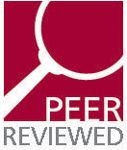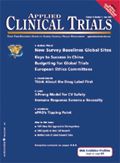Mastering Currency Fluctuation
Applied Clinical Trials
Step-by-step process for budgeting global trials that uses a Currency Risk Management method.
The number of clinical trials conducted globally, as well as the number of countries involved in each study, is increasing at a rapid rate. This trend is imposing significant planning and budgeting challenges for clinical studies managers—on top of the numerous existing issues related to understanding cultural and health care practices around the world. These complications can have profound cost impacts. They include:
- In almost all cases, budgets are planned in one currency—the currency of the sponsor company. However, the contracts and actual payments are conducted in several other currencies, typically the currencies of the countries where the trials are held. Therefore, the study's financial obligations may include absorbing fluctuations in exchange rates to meet the established contractual requirements.
- During the gap in time between clinical study budgeting and execution of the trial (often a full year), elements can change—such as the scope of the trial or the relative currency strengths—but the budget remains the same. If the budget is adversely affected by currency fluctuations, the trial starts out with less money than is needed and the scope may be cut, adversely affecting the trials results.
- Currency volatility risks are managed by multinational corporations via large departments that use sophisticated tools and employ staff financial experts. However, most companies that sponsor clinical trials are small to mid-size and they have neither the resources nor the expertise to manage currency risk fluctuation. This is a rather new discipline to the clinical trials industry—in typical practice, decision makers are mostly drug development researchers, medical directors or trial managers with little exposure to this field.

Currency Risk Management (CRM) is an emerging discipline for use in clinical trials that addresses these issues. The method features a step-by-step process that sponsors can follow to manage the financial operation of an international trial and mitigate potential cost impacts.
The anatomy of costs
Sponsors typically acquire funding from internal sources, VC firms or other funds managed by financial institutions. They receive and use this money in installments, throughout the trial process, on a number of activities. Figure 1 outlines the breakdown of a typical clinical trial budget.1

Figure 1. A breakdown of clinical trial expenses by activity.
Approximately 90% of the expenses listed in Figure 1 are usually paid in local currencies.2 While clinical trial managers plan for expenses in one currency, usually their native currency, operational managers often negotiate and strike contracts in the investigative sites native currency that cover several years of operation—in some cases up to 10 years. Obviously currency changes of the site currency vs. native currency can dramatically alter a trial's overall cost.
Inflation can also cause contracts to change in value. Many long-term contracts account for inflation (for example, those with the National Institutes of Health, NIH) and historical rates are available for estimating possible currency effects with acceptable or reasonable risks.3 However, with currency fluctuations, volatility ranges may go as high as 30% or even 50%; one cannot dismiss such risks when planning a trial, where reliable payments are a key part of site loyalty and retention.
The CRM process
With the CRM method, sponsors can address the currency fluctuation risks associated with the overall cost of an international clinical trial—be it a sponsor, VC deal or as planned by the sponsor firm itself. While the method may be utilized any time during project development, CRM analysis is best performed prior to signing any contract and consists of four steps: assembling the CRM team, evaluating trial exposure to currency risk, defining "value at risk" budgeting, and applying financial management tools.
Step one: Assembling the CRM team
The right team must be assembled to ensure optimal CRM planning. An ideal team consists of the trial manager, medical director, and a finance expert. The financial expert will need to know which countries are being considered for the trial and an assessment of the likelihood of changes to the proposed country line-up, as well as any countries considered as back-ups.
Step two: Evaluating the trial location
The CRM team should develop early projections of cash outflows and currency exposure. To accomplish this, planners will need budget estimates based on the costs of conducting the trials in the chosen countries. At this stage, planners are choosing the best countries in which to conduct the trials based on many factors, including cost factors.
Step three: Defining "value at risk" budgeting
"Value at risk" is a method used by financial planners to assess the relative risk of a currency change in a given country. It requires a systematic assessment of the probability of changes occurring that will cause the currency to change in value relative to another country. With this information, the team can understand the relative need for buying financial insurance to protect the sponsor against losses.
For example, the CRM team from Maximax International, Inc., a U.S.-based CRO, recently planned a two-year, multisite oncology study in the United States, Canada, France, and Russia. The team defined its "value at risk" budgeting by conducting a thorough analysis of all cost risk issues and exposures. This analysis looked at multiple factors, such as:
- The VC involved would commit second year payments only if the first year study proved positive and there was no risk of termination at the end of year one
- The clinical trial manager was not sure that French sites would meet targeted recruitment and, to compensate, enrollment of Canada or U.S. sites would increase by 30%
- The clinical trial manager may add another country to meet target recruitment
- For year two, if the study was not terminated, it would definitely incur all planned expenses.
By assessing these commitments, plans and risks—and others—the CRM team was then able to move on to the final stage of the CRM method: applying financial management tools.
Step four: Applying financial management tools
There are a number of methods offered by financial institutions for insuring for risk. These vary in complexity and sophistication and include: Forward Rate Agreement (FRA), Currency Options (CO), Currency Futures (CF), and Swaps (SW).4 The financial insurance protects against losses if the currency effects turn against the trial and cause the sponsor company to be liable for excessive payments. With the "value at risk" stage complete, the financial member of the CRM team can explore different budgeting plans using clinical trial planning software.
For example, in the previously mentioned oncology study, the CRM team used a budget-planning tool to come up with initial costs (in USD) for each alternative budgeting plan. Then, taking all study matters into consideration, the planner selected the optimal financial management tools for each alternative. The team conducted a pilot run to find out currency costs of the study using historical data as the "test" data. When applying historical data as a model for future changes in currencies, the total costs of currency fluctuation came out to exceed 32% of the planned cost of the trial in France. While historical data cannot be used to predict the future, they show how use of the CRM method can potentially save significant sums.
The cost for not using CRM
In the end, companies cannot afford to omit the CRM method from clinical trial planning and budgeting. By following the steps outlined here, clinical trial managers can build comprehensive planning models for managing financial operations. As a result, they can overcome budgeting challenges and financial risks associated with the growing use of international trials, meet study goals, save money and—more importantly—help deliver treatments to market quickly and safely.
Max Rashed, MS, MBA, is President and Director of Business Development, and George Kuzmanovski,* MBA, is Executive Director, Quantitative Tools and EDC, at Maximax Pharmaceutical Research, Inc., email: george.kuzmanovski@maximax.com. Jessica Dolfi, MS, is Business Consultant, and Rafael A. Campo is Manager, Data Quality and Analytics, both for Medidata Solutions Worldwide.
*To whom all correspondence should be addressed.
References
1. Estimates are rounded and based on Activity Based Costing method for 196 multicenter studies in several therapeutic areas. They reflect the overall activity costs irrelevant of the entity performing such activities. For example: QC item reflects all quality related activities related to the study. Maximax International, Inc. internal studies, http://www.maximax.com.
2. The 90% figure is the average of services performed in international studies (146 projects) and conducted at international sites. Maximax International, Inc. internal studies, http://www.maximax.com.
3. See for example www.inflationdata.com for comprehensive tables of past inflation by month and year. This site also provides information on possible future trends in inflation.
4. An introductory review of currency risk management methods can be found in Wikipedia at http://en.wikipedia.org/wiki/Hedge_(finance)#Types_of_hedging.
